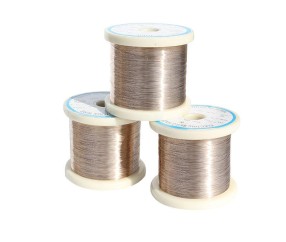Will The deformation of FeCRAL resistance wire will lead to the resistance changes?
Release time:2025-12-16 Strike:1054 Inquire Now
Yes, the deformation of FeCrAl resistance wire can lead to changes in resistance. The extent and nature of these changes depend on the type and degree of deformation, as well as the operating conditions. Here's how deformation affects resistance:

1. Mechanical Deformation:
When FeCrAl wire is subjected to mechanical deformation, such as bending, stretching, or twisting, the following effects can occur:
Change in Cross-Sectional Area:
Stretching or thinning of the wire reduces its cross-sectional area, which increases its resistance because resistance is inversely proportional to the area ().
Compression or thickening of the wire increases the cross-sectional area, leading to a decrease in resistance.
Change in Length:
Stretching increases the length of the wire, which directly increases resistance ().
Bending or coiling changes the effective path of current, which may slightly alter resistance depending on geometry.
2. Microstructural Changes:
Deformation can alter the wire's internal structure, which affects its resistivity ():
Work Hardening:
Mechanical deformation increases dislocation density, which can increase resistivity slightly due to increased electron scattering.
Stress Relaxation or Recrystallization:
If the wire is heated after deformation, stress relaxation or recrystallization can restore the original structure, potentially returning the resistance to its previous value.
3. Thermal Effects:
Deformed regions might experience localized heating during operation, causing a non-uniform temperature distribution, which affects resistance since FeCrAl has a positive temperature coefficient of resistance (TCR) (resistance increases with temperature).
4. Oxide Layer Disruption:
Deformation can disrupt the aluminum oxide layer on the wire's surface, exposing the material to oxidation or other environmental effects. This might indirectly affect resistance over time as the material degrades or forms new oxides.
Key Takeaways:
Minor Deformations: Small deformations typically cause negligible resistance changes unless they significantly alter the wire’s geometry.
Severe Deformations: Major deformations, such as elongation or kinking, can lead to noticeable resistance changes due to changes in length, cross-sectional area, and material structure.
Recovery: Resistance changes caused by deformation may be reversible with proper annealing, depending on the extent of the deformation.
For applications requiring precise resistance, it is important to minimize mechanical deformation during installation and operation.
-
How to Apply for BIS Certificate India
Here is a clear explanation in English on how to apply for a BIS...
-

Alloy28 Stainless steel with 28% Cr and 3% Mo
🔧 UNS N08028 Stainless Steel – Overview and ApplicationsUNS N080...
-

Exploring the Applications of Resistance Wire: From Industrial Heating to Electric Vehicles
Resistance wire is a specialized material widely used in various...
-

How to Caculate the Nichrome80 Temperature
We’re super stoked about our Nichrome 80 wire, a go-to for high-...



